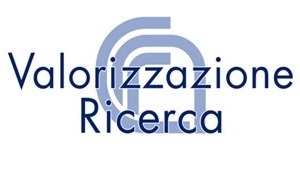TECHNOLOGY DESCRIPTION
Cell replacement therapy for regenerative medicine is based on utilizing a patient’s own cells that have been reprogramed into healthy tissue/organ stem or differentiated cell types that are useful for cellular substitution of diseased cells. The technology for cell reprograming is dependent on inducing change in gene expression of a cell, whereby gene expression is first “erased” and then “reset” to a specific pattern that determines the identity of a tissue or organ cell type. In addition to cell reprograming being utilized to generate induced pluripotent or specific stem cells for cell replacement therapy, cell reprograming is also useful for generating large numbers of diseased cell types for in vitro analysis such as for proteomics, disease modeling or for personalized medicine and patient specific drug testing or discovery of ex situ patient diseased cells.
The present invention relates to a new transcript, INT6-5a, an isoform of gene EIF3E (gene ID 3646) that when up regulated, promotes cellular reprogramming such as for generation of induced pluripotent stem cells or somatic stem cells or specific tissue/organ cell lineages. The mechanism by which INT6-5a or EIF3E full length induces cellular reprograming is by the capacity of these gene products to regulate translation of histone mRNA. Proliferating cells in which histone protein synthesis is restricted generate progeny cells that have a more euchromatin/open state than cells in which histone translation is not restricted. Cellular reprogramming is most efficient in cells that have robust cell proliferation capacity and can be stimulated to proliferate in vitro to respect to cells that are maintained permanently or transiently in a quiescent proliferative state, associated with senescence, being terminally differentiated or having mitosis inhibiting mutations. Reversal of the negative effects associated with the biological ageing, extensive in vitro culture passaging or closed heterochromatic state can be induced with up regulation INT6-5a or down regulation of EIF3E full length.
BENEFITS
Cellular reprogramming is most efficient in cells that have robust cell proliferation capacity and can be stimulated to proliferate in vitro. Cells that do not proliferate or have lost proliferation capacity are those that have, for instance, entered into (or maintained in) a quiescent proliferative state such as patient derived differentiated epithelial cells, age onset induced senescence or shortened telomeres due undergoing a significant number mitotic events. Reversal of the negative effects associated with ageing or closed chromatin state in differentiated cells can be induced with up regulation INT6-5a or down regulation of EIF3E full length.
The technology for cell reprograming is dependent on inducing change in gene expression of a cell, whereby gene expression is first “erased” and then “reset” to a specific pattern that determines the identity of a tissue or organ cell type. In addition to cell reprograming being utilized to generate induced pluripotent or specific stem cells for cell replacement therapy, cell reprograming is also useful for generating large numbers of diseased cell types for in vitro analysis such as for proteomics, disease modeling or for personalized medicine and patient specific drug testing or discovery of ex situ patient diseased cells.
LIMITATIONS
No limitations were identified.
The cellular reprogramming with INT6-5a and EIF3E full length in the present invention has been performed both with the conventional DNA integrating and non-integrating genome approach described in the literature, which involves the use of lentivirus, and with transient transfection methods with mRNAs.
The in vivo data obtained by the authors of the present invention supports the fact that the transient expression of INT6-5a into patient epithelial cells does not convert healthy cells into cancer or tumor cancer when transplanted into nude mice. In addition, induced pluripotent stem cells generated with INT6-5a, and Oct4, Sox2, Klf4 and C-myc, when transplanted into NOD-scid mice only generate teratomas, a growth mass that is specifically linked to pluripotent stem cells growth and differentiation. INT6-5a does not act here as an oncogene. Instead, it has been observed that the rise in the cell proliferation is only temporary when the expression of INT6-5a is transient and that the transient re-modelling of the chromatin obtained with the method provided by the inventors did not produce, in the long-term culture, a rise of the rate of mutation of the normal primary cells.
APPLICATIONS
INT6-5a or EIF3E full length assisted cellular reprogramming may involve both the loss and gain of a diseased state insofar as iPSC cells can also be generated from healthy cells or diseased cells for the purpose of obtaining cellular models of diseases for research purposes or for the experimentation of patient-specific drugs. For example, iPSC cells may be generated from diseased primary cells of patients with Alzheimer's or Parkinson's disease or generated into diseased nervous system cells that recapitulate Alzheimer's or Parkinson's disease.
MATERIALS
Readiness Level (TRL)
 Patent Grading Report |
Patent Grading ReportThe Grading Patents Report evaluates and grades US patents Sample Buy from Wisdomain |
STATUS
Current status
PCT Application
AVAILABILITY
Available for
Licensing
INVENTOR / TEAM
Ileana Zucchi, Valeria Tria and Rolland A. Reinbold






